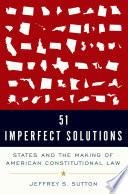
Constitutional Law, Administrative Law, and Human Rights
A Critical Introduction
Constitutional Law, Administrative Law, and Human Rights provides an introduction to public law which draws on developments in politics, the law and society to help the reader gain a fundamental appreciation of the law in its wider context. In addition, it explores the latest ongoing debates around potential constitutional reforms and the author's stimulating style encourages critical analysis. Online resources This book is accompanied by the following online resources: - a fully-integrated online casebook, with edited versions of leading cases and relevant legislation - a selection of mind-maps to help with revision - bonus chapters on the history of the EU - suggested tutorial outlines for lecturers
- ISBN 13 : 0198804687
- ISBN 10 : 9780198804680
- Judul : Constitutional Law, Administrative Law, and Human Rights
- Sub Judul : A Critical Introduction
- Pengarang : Ian Loveland,
- Kategori : Law
- Penerbit : Oxford University Press
- Bahasa : en
- Tahun : 2018
- Halaman : 701
- Google Book : http://books.google.co.id/books?id=zmdRDwAAQBAJ&dq=intitle:Constitutional+Law&hl=&source=gbs_api
-
Ketersediaan :
Online resources This book is accompanied by the following online resources: - a fully-integrated online casebook, with edited versions of leading cases and relevant legislation - a selection of mind-maps to help with revision - bonus ...








